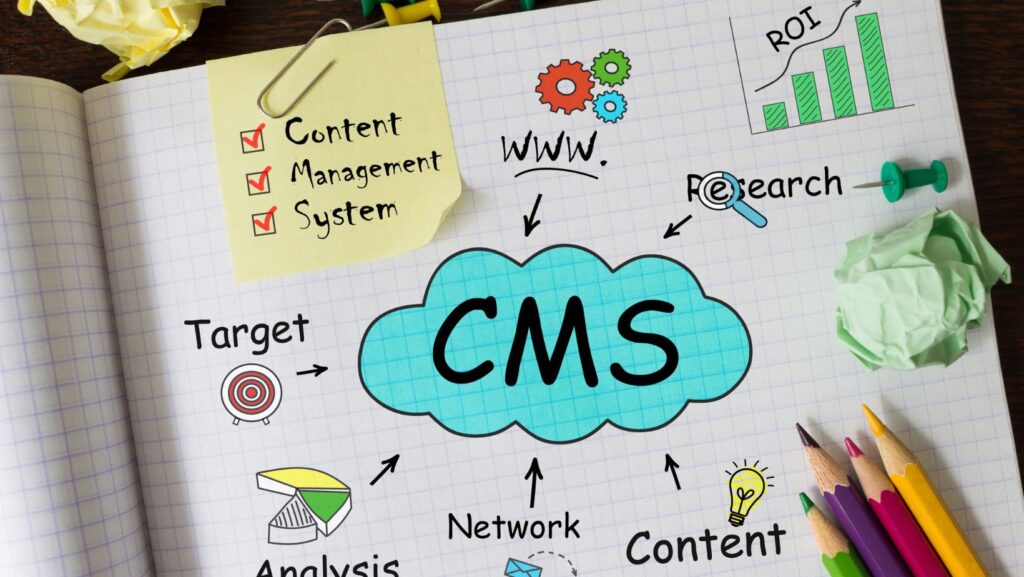Headless content management systems (CMS) give companies the ability to be flexible, quick, and scalable. Therefore, it’s an ideal solution for startups and any enterprise that requires evolving content solutions. However, the deployment of a headless CMS should be purposeful. This article outlines how to develop a purposeful headless CMS strategy for long-term scalability and growth.
Define Your Scalability Objectives Clearly
Before acquiring a headless CMS, you need to evaluate scalable requirements. What is your projected content volume in the future? What other user traffic growth do you anticipate? Will you diversify your online channels or expand into international markets? Understanding what scalability should be from the start allows you to choose a headless CMS solution that fits your needs without needing costly overhauls or migrations later to fit your needs for successful growth.
Select a Headless CMS That Supports Your Growth Ambitions
Choosing headless CMS platforms that match anticipated scalability requirements is crucial. Evaluate available solutions for their scalability potential regarding API effectiveness, cloud hosting, integration ease, and performance during peak usage. Tools like Next Preview can enhance this scalability by enabling real-time content previews across environments, ensuring seamless collaboration and deployment. The more adaptable a solution is and the ease with which it can integrate future requirements for content management, the more stable and dependable it will be for an expanding enterprise.
Plan for Flexible and Efficient Content Modeling
An important part of a scalable, headless CMS solution comes from the ability to generate flexible, high-performance content models. Strategize your content hierarchy for the reusable, easy to segment, and the fluid. When this kind of content modeling is feasible, your brand will effortlessly adapt and/or expand content hierarchies to fulfill new requirements over time without added implementation efforts or expenditures for future content management adjustments.
Invest in API-First Infrastructure and Robust Integrations
Choose a long-term scalable headless CMS by opting for an API-first solution. An API-driven content management system is designed to work seamlessly with external applications and services. Furthermore, APIs facilitate content delivery across various platforms web, mobile, IoT, etc. to ensure a unified experience across all customer touchpoints. Therefore, by investing in a headless CMS with robust API capabilities, you position your solution for flexibility and your organization to adapt to new, rapidly shifting developments in the future.
Develop a Comprehensive Omnichannel Content Strategy
Scalable, headless CMS solutions are ideal when paired with a carefully established, detailed omni channel content strategy. This means planning how content will be generated, maintained, and implemented across multiple channels to ensure messaging and branding are consistent and successful no matter the user engagement with the brand. The better an omnichannel strategy is plotted out in advance, the better an enterprise can engage with its customers, enhance brand value, and provide consistent experiences across all avenues.
Implement Automated Workflows and Streamlined Processes
Increase scalability by automating workflows and processes in your headless CMS. For instance, investigate your current content management systems and determine the manual or repetitive processes that could use an automated solution. Many headless CMS platforms already include built-in workflow automation. By reducing the burden of day-to-day operations through automated task achievement, you become more efficient and productive with less human error, giving your content team the ability to accomplish more without losing quality or time.
Prioritize Personalization and Dynamic Content Delivery
Scalable digital experiences depend on the anticipated delivery of content in a personalized manner. Avoid the need to intervene and insert specific content by using personalization strategies in your headless CMS; allow your software to do this for itself based on user requirements, usage trends, and demographic information. Investing in personalization as a focus ensures that users will not only use and enjoy your product better, but also become repeat customers for your brand as you continuously meet evolving needs.
Ensure Security and Compliance from the Ground Up
To scale is compliance and security. From the start, you can implement enterprise-level security measures throughout your headless CMS architecture secure logins, encrypted data, permissioning on a granular, role-based level as well as compliance with regulatory standards. If your organization works with sensitive client information, championing compliance with GDPR or CCPA shows that your CMS solution is safe and secure and that your growing organization will protect its reputation.
Integrate Scalable Cloud-Based Hosting Solutions
For future sustainable expansion, utilize scalable, cloud-based hosting that is headless CMS compatible. The cloud enables consistent, effective content delivery that can accommodate high traffic spikes or increased content down the line without compromising the user experience. Furthermore, cloud-based hosting enables your enterprise to scale dynamically and quickly when needed, maintaining cost-effective expansion support and operational flexibility.
Foster Collaboration and Cross-Functional Alignment
The key to a scalable headless CMS approach is strong internal collaboration and inter-departmental alignment. Foster ongoing communication and collaboration between content creators, developers, marketers, and enterprise decision-makers. Set up workflows, responsibilities, and processes so that all parties work together in harmony on integrated content-related goals. The better your company collaborates, the better quality content it will produce with consistent strategic choices, and the easier it will find scaling the platform.
Incorporate Continuous Analytics and Performance Monitoring
To properly scale a CMS, efforts include comprehensive analytics and performance tracking. Always review and monitor engagement with everything from users and articles to site-wide latency and more, across the board. By continuously using analytics, your team can be proactive in appropriately adjusting content strategies, finding performance flags, and assisting efforts to keep scaling and proper content operation over time.
Prioritize Accessibility for Broader Audience Reach
Digital accessibility is an essential element of sustainably scalable, long-term audience engagement. Integrating accessibility from WCAG requirements to headless CMS into your development and distribution plans ensures that what’s created and experienced is equally usable by everyone from developers to non-binary users who may need assistive devices to participate. Accessibility enhances brand reputation, expansion opportunities, and a functional digital existence that will eventually serve global populations.
Train and Empower Your Content and Development Teams
After you get your content creators and developers in place, you need to maintain training and enablement to facilitate efficient, ongoing scalability. Provide ongoing seminars about best practices for content modeling, the particulars of the API, integrations, and how to use the CMS. The better your staff understands the nuances of your headless CMS solution, the more they’ll harness its capabilities for richer creativity, efficiency in content creation timelines, and the success of a platform that can scale continually.
Regularly Evaluate and Optimize Your Strategy
An actually scalable headless CMS always requires re-evaluation and iterative improvements over time, so make sure there are set times throughout the year for a complete review of everything from the content workflow to assessing each step from creation through distribution to ensure it’s done correctly and efficiently. Reviewing the effectiveness of the workflow, for example, can unveil pain points and redundancies within the process that merely need some minor tweaking or even automation, all of which serve improved productivity and lower operating costs.
In addition to assessing content performance from an effective standpoint, also assess effective performance from an infrastructural viewpoint; relative performance to content loading and reliability, scalable performance with traffic spikes and general uptime and response time evaluation of the system can all indicate whether there are effectiveness issues that must be fixed. Keeping track of this data, for example, avoids problems from becoming pitfalls in user experience, allowing professionals to address issues before they frustrate end users and assess needed resources for sustainable growth.
Ultimately, user engagement metrics should be evaluated on a consistent basis as well. This reporting illuminates how audiences engage with your content across digital platforms. For instance, by monitoring how users traverse your site, how long they spend on certain pages, their bounce and conversion rates, your organization can uncover the most appealing types of content formats/styles as well as certain pieces that need revising or updating. This information fosters a nimble content strategy that responds to customer needs while improving customer satisfaction and engagement.
Furthermore, integration performance should be assessed on a regular basis as well. Over time, business needs and transformations may justify integration review and reassessment. For example, over time as business needs change or as technology evolves, the integrations used with systems like your email marketing platform, e-commerce shopping platform, CRM systems, or business intelligence platforms may become obsolete or require better efficiencies.
Assessing performance allows organizations to find integrations no longer needed, assess how APIs may be more efficient, and integrate new technologies that have better performance/options. Furthermore, consistent assessment helps organizations pay attention to changing markets, trends, and other digital possibilities.
If something changes that is out of your organization’s control, implementing a change in your CMS strategy sooner rather than later puts you ahead of the game and keeps you relevant, proactive, and competitive against other digital experiences. Constantly assessing the market allows organizations to bring on new methods of content creation, integrations with software, or more relevant avenues of distribution that keep the project relevant and at the forefront of digital experience.
Thus, by constantly assessing opportunities and changes related to the project using a headless CMS approach and implementing changes, your organization will be effective, efficient, and in control. Where assessment is the catalyst to keep the wheel moving constantly, it allows your organization to scale quicker and easier while remaining flexible. This fosters a culture of improvement, enhancement, and responsiveness to anything that may happen, resulting in sustained growth, competitive advantages, and a sense of fortitude in an always-changing environment.
Build a Future-Proof Digital Foundation
Finally, when it comes to scalable efforts down the line, a future-proof digital infrastructure is vital. As you create your digital presence and initiatives, look for tools and avenues that can easily transform and integrate with additional digital channels, content formats, and digital efforts once they emerge. For instance, headless CMS solutions are structured for future-proofing so that your business can always adapt to new digital products and services, onboard other technologies quickly, and be agile and successful in the rapidly transforming digital landscape.
Strategic Scalability with Headless CMS
Implementing a headless CMS for sustainable long-term scalability hinges upon staging, design decisions that make sense, an adaptable architecture, strong and easily changeable integrations, extensive analytics, and an iterative mindset. From the start, organizations need to determine scalability goals and anticipated needs down the line, studying anticipated expansion in content creation/management, traffic requirements, cross-platform distribution, and potential niche abilities down the line. Such discoveries will ensure a firmly established architecture is still flexible enough to adjust for future in-house needs as well as rapidly evolving industry standards.
Architecture that is adaptable goes a long way in promoting the capability for ongoing scalability. When many content and channel needs are anticipated further down the line, organizations need to configure their current content to new digital pathways later on while integrating proprietary developments much easier to accomplish with little redevelopment. Modular content with an API-first structure allows for easier transformation of needs down the line while avoiding hefty costs associated with managing an exponentially growing digital footprint.
The ability to integrate with other programs helps ensure scalability.
As a headless CMS is needed for various third-party applications, services, and technologies, the ability to integrate ensures coupling to create a cohesive approach is critical. With powerful, API-supported integrations with everything from e-commerce sites to analytics dashboards to CRM and marketing engines, for example, companies create a comprehensive digital ecosystem that champions more complicated content undertakings. Such integration fosters reduced operational friction, heightened efficiency, and heightened sensitivity to changing user engagement and digital opportunities. Similarly, the opportunity for extensive analytics can help guarantee scalability and ongoing efficacy of content as projects need insight into success, user engagement, and digital channel effectiveness.
Companies that monitor and review efforts continually as they relate to content effectiveness can see what’s working and what’s not, improving delivery efforts and making recommendations to fix issues while they’re still minor blips. The focus on analytics and data-driven usability encourages ongoing scalability in case content efforts must quickly change to remain in line with overall business goals. Ultimately, without ongoing optimization, all of the above will not maintain a true equilibrium for sustainable scaling down the line.
By retrospectively evaluating how your headless CMS functions and what needs to change, your information will keep your business on its toes using realistic and practical results to retroactively learn from new trends and market conditions that somehow still manage to keep the business ahead of the game. This is because ongoing optimization allows for digital tweaks, process changes, and system architecture adjustments that champion CI, client satisfaction, and differentiated advantage.
Thus, without ongoing optimization and a smart strategic approach to a potential future implementation with a headless CMS, your organization will never be able to sustain digital growth with continued incremental improvements. However, by planning ahead, knowing how to scale in the future now with the proper potential for flexibility, integration, analytics, and ongoing optimization, the organization can take solid steps now to build a digital foundation that champions sustained success and growth going forward in an ever-changing digital realm.



